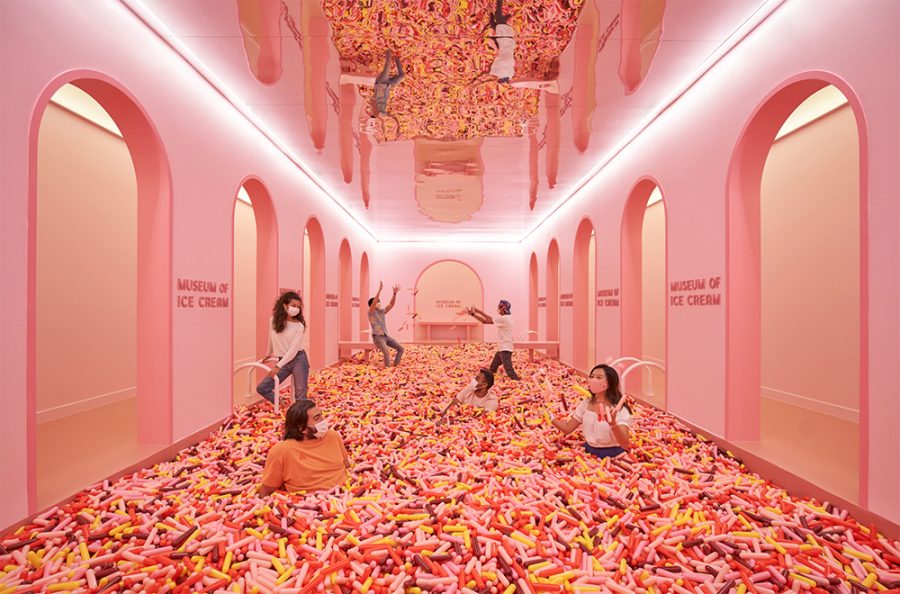Launching in a Time of COVID-19

“People say, ‘You’re crazy launching at this point,’” says Jeya Ayadurai, chairman of Journeys, a Singapore heritage tour and attractions company, as he reflects on the recent opening of Hell’s Museum, a SG$1.8 million project that is part of the redevelopment of Haw Par Villa. “But the launch is exactly what we needed.”
In 2015, Journeys took over the management of Haw Par Villa, an iconic and eclectic Singapore attraction, featuring over 1,000 dioramas, many dating to the 1930s. Ayadurai decided to close the park and focus on reinvestment last year during the height of the pandemic, as social distancing rules made it unprofitable to operate. But with many restrictions still in place, some observers question the timing of the relaunch.
“The launch is letting the rest of the country know there is something new, and things are happening at Haw Par Villa. It gets the message out,” Ayadurai says. “Plus, with the December school holidays, there’s only so much that parents can take of their kids at home before they go crazy.”
As Hell’s Museum opened—in time for Halloween—Haw Par Villa’s monthly attendance had dropped to 7,000 people, which was down from a prepandemic height of 45,000. However, Ayadurai expects visitor numbers to top 20,000 by the end of the year.
Creating a buzz is as important as ever agrees Alan Mahony, vice president for marine and water park operations at Atlantis Sanya. In April, Atlantis Sanya set a Guinness World Record for the largest underwater mermaid show.

“A big part of our strategy has been to be positive, create entertainment options to enhance experience, and provide guests with fantastic video and photo opportunities,” Mahony says. “We have found during COVID-19 that this exposure and viewing has been critical to our success.”
The record setting event likely would not have been possible in prepandemic times. It relied on China’s free diving community, many of whom would normally be traveling to deeper waters elsewhere in the region, if not for travel restrictions.
Still, launching an attraction or new event during a pandemic is certainly not without its challenges.
Singapore’s Museum of Ice Cream, which opened its doors in August, began selling tickets four months in advance. The tickets sold out within two days.
“Given the changing rules and restrictions, we had to make a decision to go for it. Thankfully we had a wonderful response, which gave us the confidence that there was strong consumer demand for experiences like ours, even during the pandemic,” explains Pirakash T., the Asia-Pacific head of the Museum of Ice Cream.
The changing COVID-19 landscape would soon present more challenges, though. When tickets were first sold, the maximum group size allowed by government social distancing rules was five. Rising coronavirus case numbers would lead the government to cut this to two people, then raise and lower it again several times. Singapore added a vaccination requirement.
Properly communicating these rule changes to guests across all the company’s channels, including newsletters and social media, as well as rescheduling larger groups, have been among the biggest challenges. The two-person limit also restricts program offerings. Perhaps even more importantly, the changes necessitated by fluctuating government rules do not “make for a great introduction to our brand” or “give us a lot of room to try new things,” reflects Pirakash.
Despite operating at approximately 50% capacity and opening only four days a week, company officials say the Museum of Ice Cream has welcomed tens of thousands of visitors since August. It is hopeful the introduction of new “Vaccinated Travel Lanes,” permitting quarantine-free entry to travelers from a select group of countries, will increase tourism numbers and enable the Museum of Ice Cream to extend its operating hours.

Other attractions, like Journeys’ Battlebox museum at Fort Canning Park, have similarly reduced their days of operation to focus on the weekend domestic market until international tourism arrivals rebound.
Back at Haw Par Villa, Ayadurai draws perspective from his background as a military historian.
“During war, even the simplest things become difficult to do,” he reflects. In the case of Hell’s Museum, construction was delayed by Singapore’s manpower crunch.
“Our contractors couldn’t find workers,” he explains, “and they couldn’t find subcontractors because so many of them were holed up in their dormitories or were sick or were potentially exposed to people who were sick. There were constant disruptions.”
Ayadurai’s solution to the labor shortage was to create redundancies. If carpentry work was needed, for example, Journeys would hire two or three contractors. If one fell sick, another could step in. While the additional costs, estimated at SG$200 million, presented cash flow challenges at a time when revenues were limited, they didn’t “break the bank.”
Five Tips for Launching During a Pandemic
- Be prepared to make quick decisions, as rules about social distancing and travel change.
- Be in constant contact with government authorities and trade associations, like IAAPA, to stay abreast of the changing regulatory landscape.
- Check your reserves. Before embarking on a new project, do you have enough in the bank to make it through difficult times?
- Establish relationships with multiple vendors. Redundancies can overcome manpower shortages and some supply chain issues.
- Treasure your team and ensure that staff understand why changes are needed.
- Conduct trainings and stay in touch with part-time staff, even if they are not currently working. “Even though you’ve had people for years, in an environment like a pandemic where you are isolated, relationships can dry up pretty fast if you don't nurture them,” observes Journey’s Jeya Ayadurai.
- Atlantis Sanya organizes parties, special meals, and sporting events for out-of-town staff who are required to take annual leave but cannot return home due to travel restrictions.
